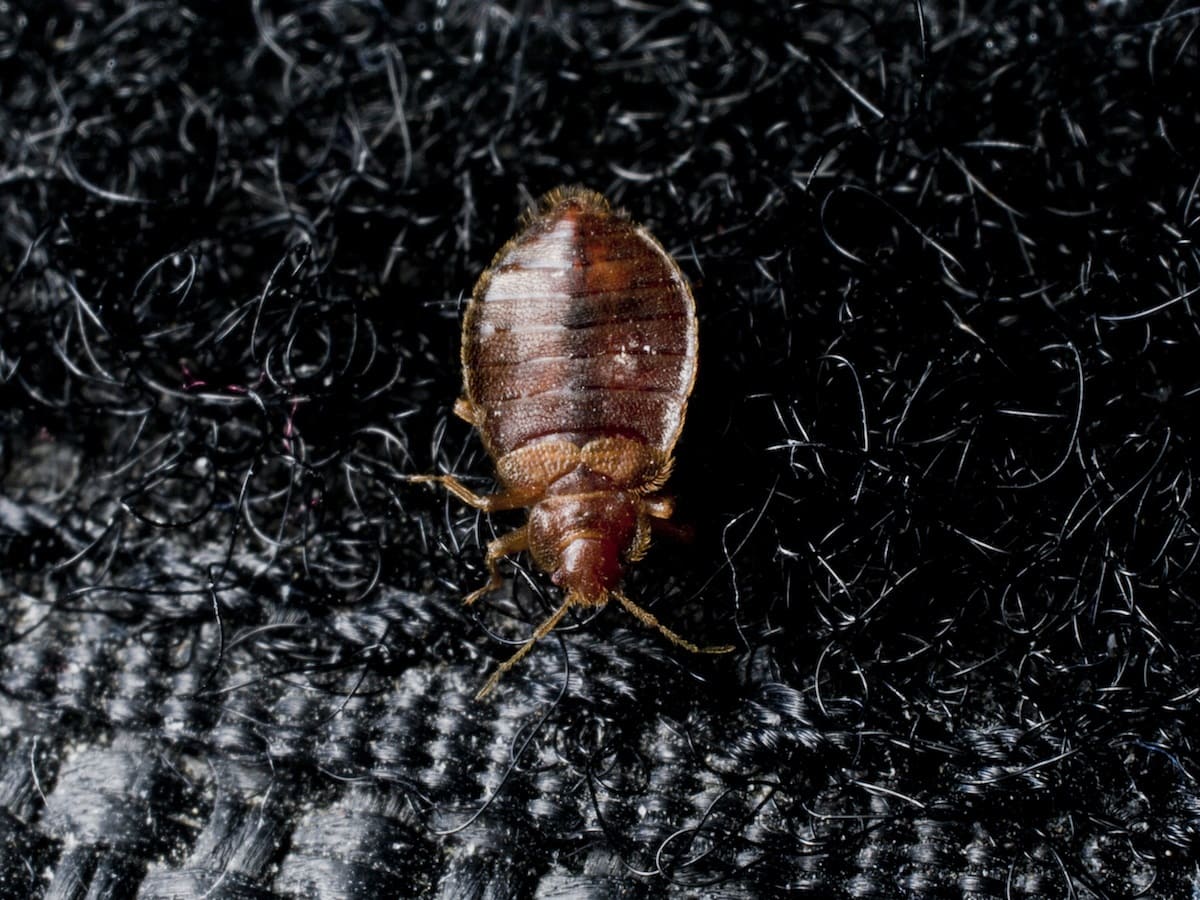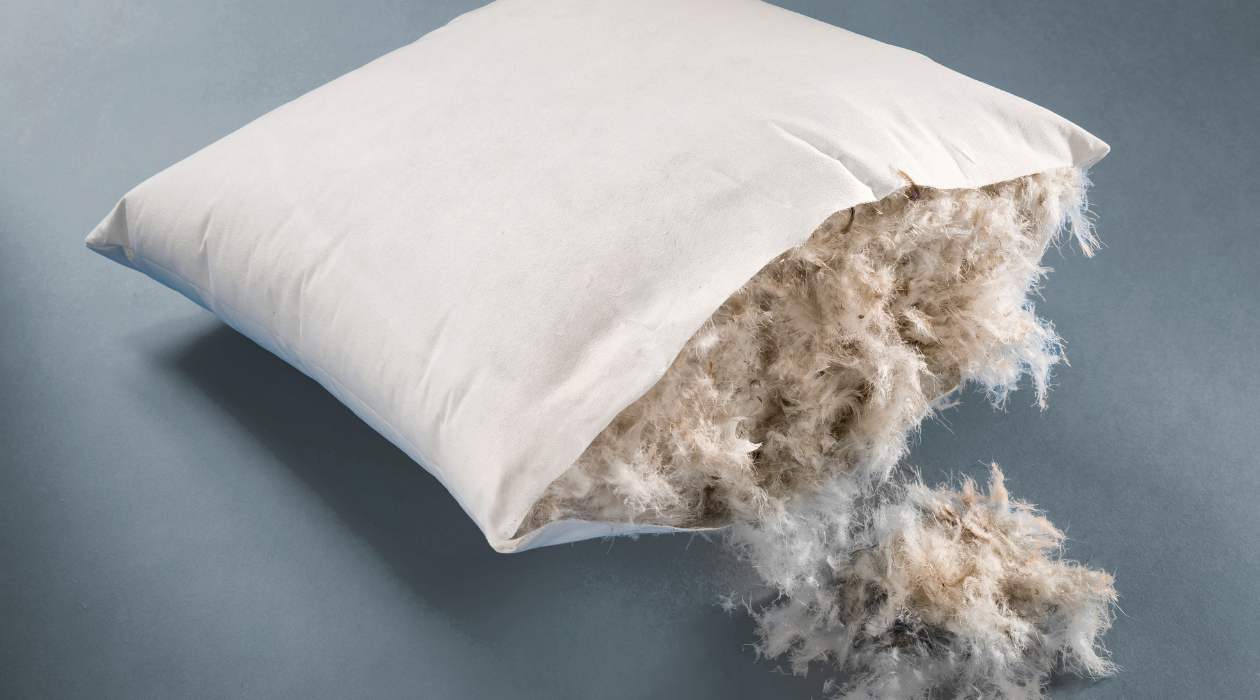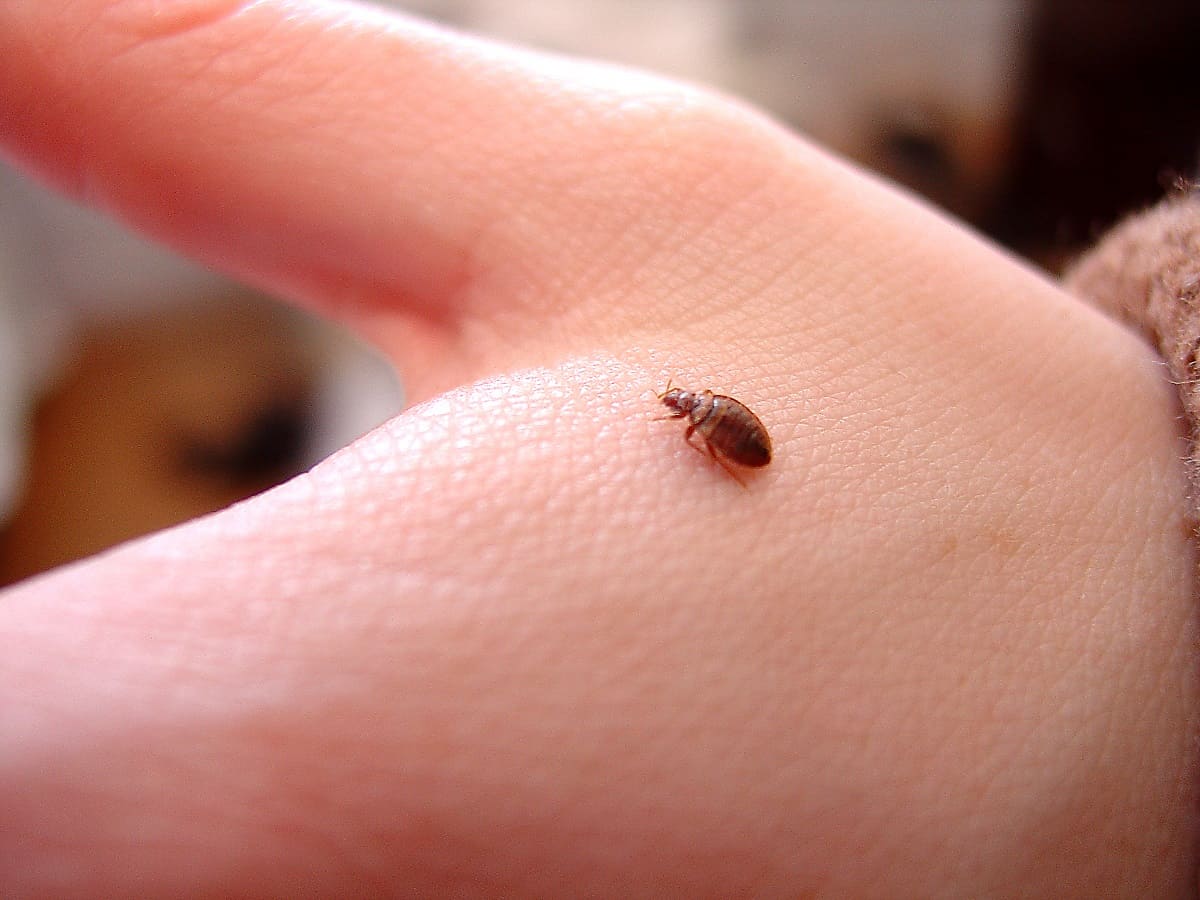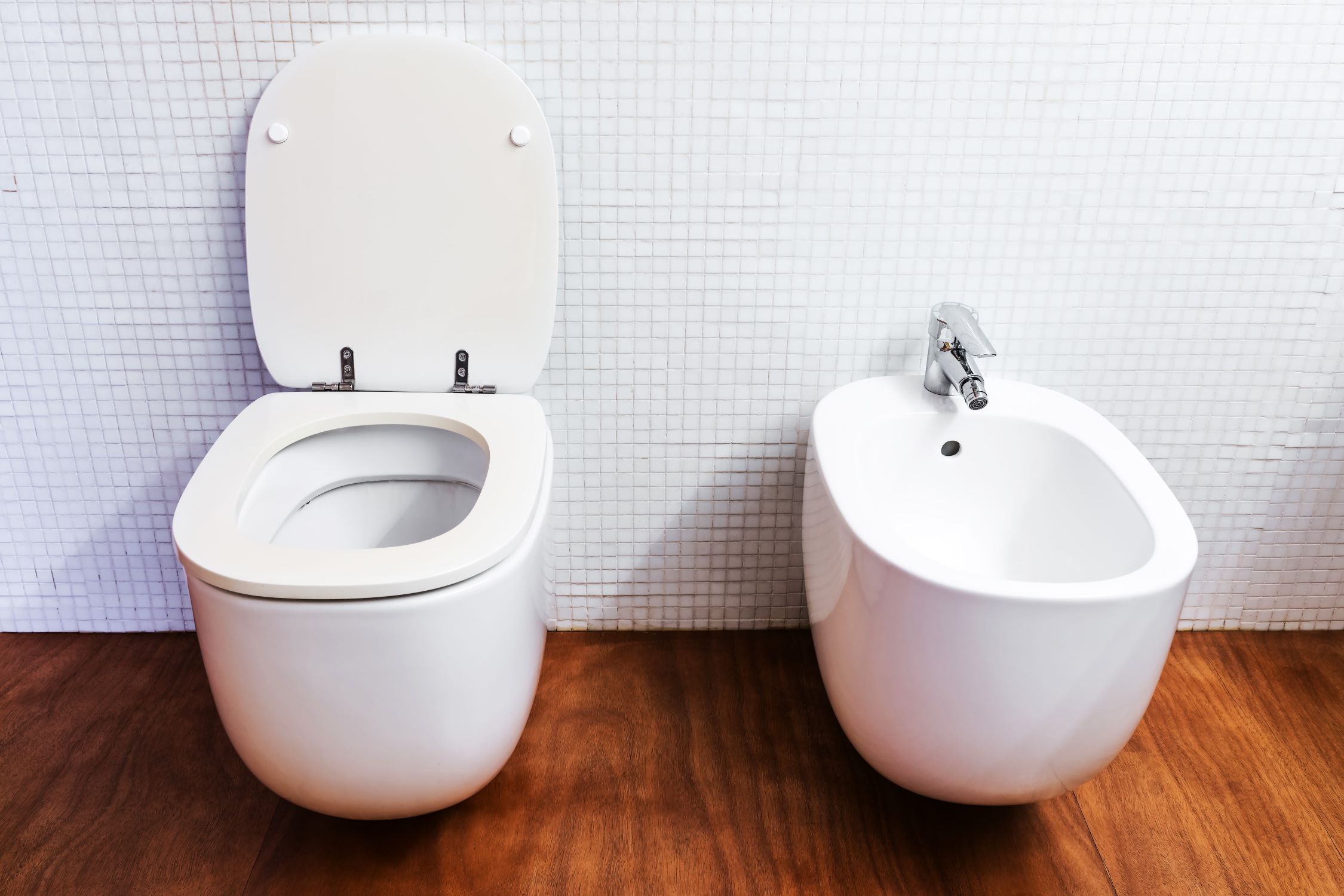Home>Furniture>Bedroom Furniture>Where Do Bed Bugs Come From


Bedroom Furniture
Where Do Bed Bugs Come From
Modified: October 22, 2024
Discover the origin of bed bugs and how they infest your bedroom furniture. Protect your home from these pests with our expert tips and prevention strategies.
(Many of the links in this article redirect to a specific reviewed product. Your purchase of these products through affiliate links helps to generate commission for Storables.com, at no extra cost. Learn more)
Introduction
Bed bugs are small, elusive insects that have plagued humans for centuries. While they are not known to transmit diseases, their presence can cause significant distress and discomfort. Understanding where bed bugs come from and how they spread is crucial in preventing and controlling infestations.
Bed bugs, scientifically known as Cimex lectularius, are parasitic insects that feed on the blood of humans and warm-blooded animals. They are primarily active at night and hide in cracks and crevices during the day, making them difficult to spot and eliminate.
These pests have been present throughout human history and were once widespread before the use of modern pesticides effectively controlled their populations. However, in recent years, bed bugs have experienced a resurgence, leading to a growing public concern.
Knowing the key aspects of bed bug behavior, habitat, and methods of infestation is crucial in preventing their spread and minimizing the risk of infestations in your home or business.
Key Takeaways:
- Don’t Let Bed Bugs Hitch a Ride: Protect Your Home and Belongings
Understanding how bed bugs spread and where they come from is crucial for preventing infestations. Regular inspections, minimizing clutter, and being cautious with second-hand items can help keep these pests at bay. - Travel Smart: Avoid Bringing Bed Bugs Home
When traveling, inspect accommodations, keep luggage elevated, and use protective encasements to prevent bed bugs from hitching a ride. Stay vigilant in public spaces and seek professional help for infestations.
Read more: Where Do Bed Bugs Live
Understanding Bed Bugs
Bed bugs are small, flat insects with oval-shaped bodies. They have six legs and are reddish-brown in color. While they are not able to fly, they are excellent climbers, capable of scaling walls and maneuvering within bedding and furniture to seek out their preferred hiding spots.
Contrary to popular belief, bed bugs are not a sign of a dirty or unsanitary environment. They can infest even the cleanest of spaces, as they are primarily attracted to warmth, moisture, and the carbon dioxide emitted by their sleeping hosts.
Bed bugs target humans as their primary source of blood, feeding for around five to ten minutes before retreating to their hiding places. Their bites are typically painless, and many people may not exhibit any noticeable reaction to bed bug bites. However, some individuals can develop itchy, red welts or even experience allergic reactions.
It is important to note that bed bugs are excellent hitchhikers and can easily travel on clothing, luggage, and other personal items, allowing them to infest various locations.
Bed Bug Habitat
Bed bugs prefer to live in close proximity to their hosts, which typically means they are found in or near sleeping areas. Common hiding spots include the seams of mattresses, box springs, bed frames, headboards, and even behind wallpaper or electrical outlets.
These insects have a remarkable ability to squeeze into tiny cracks and crevices, making it challenging to locate and eliminate them. They are also known to hide in upholstery, behind baseboards, in furniture, and even in the recesses of luggage or backpacks.
It is important to note that bed bugs are not limited to homes and bedrooms. They can infest a variety of spaces, including hotels, dormitories, schools, hospitals, and public transportation.
Key Takeaways:
- Don’t Let Bed Bugs Hitch a Ride: Protect Your Home and Belongings
Understanding how bed bugs spread and where they come from is crucial for preventing infestations. Regular inspections, minimizing clutter, and being cautious with second-hand items can help keep these pests at bay. - Travel Smart: Avoid Bringing Bed Bugs Home
When traveling, inspect accommodations, keep luggage elevated, and use protective encasements to prevent bed bugs from hitching a ride. Stay vigilant in public spaces and seek professional help for infestations.
Read more: Where Do Bed Bugs Live
Understanding Bed Bugs
Bed bugs are small, elusive insects that have plagued humans for centuries. While they are not known to transmit diseases, their presence can cause significant distress and discomfort. Understanding where bed bugs come from and how they spread is crucial in preventing and controlling infestations.
Bed bugs, scientifically known as Cimex lectularius, are parasitic insects that feed on the blood of humans and warm-blooded animals. They are primarily active at night and hide in cracks and crevices during the day, making them difficult to spot and eliminate.
These pests have been present throughout human history and were once widespread before the use of modern pesticides effectively controlled their populations. However, in recent years, bed bugs have experienced a resurgence, leading to a growing public concern.
Knowing the key aspects of bed bug behavior, habitat, and methods of infestation is crucial in preventing their spread and minimizing the risk of infestations in your home or business.
Key Takeaways:
- Don’t Let Bed Bugs Hitch a Ride: Protect Your Home and Belongings
Understanding how bed bugs spread and where they come from is crucial for preventing infestations. Regular inspections, minimizing clutter, and being cautious with second-hand items can help keep these pests at bay. - Travel Smart: Avoid Bringing Bed Bugs Home
When traveling, inspect accommodations, keep luggage elevated, and use protective encasements to prevent bed bugs from hitching a ride. Stay vigilant in public spaces and seek professional help for infestations.
Read more: Where Do Bed Bugs Live
Understanding Bed Bugs
Bed bugs are small, flat insects with oval-shaped bodies. They have six legs and are reddish-brown in color. While they are not able to fly, they are excellent climbers, capable of scaling walls and maneuvering within bedding and furniture to seek out their preferred hiding spots.
Contrary to popular belief, bed bugs are not a sign of a dirty or unsanitary environment. They can infest even the cleanest of spaces, as they are primarily attracted to warmth, moisture, and the carbon dioxide emitted by their sleeping hosts.
Bed bugs target humans as their primary source of blood, feeding for around five to ten minutes before retreating to their hiding places. Their bites are typically painless, and many people may not exhibit any noticeable reaction to bed bug bites. However, some individuals can develop itchy, red welts or even experience allergic reactions.
It is important to note that bed bugs are excellent hitchhikers and can easily travel on clothing, luggage, and other personal items, allowing them to infest various locations.
Bed Bug Habitat
Bed bugs prefer to live in close proximity to their hosts, which typically means they are found in or near sleeping areas. Common hiding spots include the seams of mattresses, box springs, bed frames, headboards, and even behind wallpaper or electrical outlets.
These insects have a remarkable ability to squeeze into tiny cracks and crevices, making it challenging to locate and eliminate them. They are also known to hide in upholstery, behind baseboards, in furniture, and even in the recesses of luggage or backpacks.
It is important to note that bed bugs are not limited to homes and bedrooms. They can infest a variety of spaces, including hotels, dormitories, schools, hospitals, and public transportation.
Bed Bug Habitat
Bed bugs prefer to live in close proximity to their hosts, which typically means they are found in or near sleeping areas. Common hiding spots include the seams of mattresses, box springs, bed frames, headboards, and even behind wallpaper or electrical outlets.
These pests have a remarkable ability to squeeze into tiny cracks and crevices, making it challenging to locate and eliminate them. They can also hide in upholstery, behind baseboards, in furniture, and even in the recesses of luggage or backpacks.
While bedrooms are the most common areas to find bed bugs, they can infest a variety of spaces beyond the home. Hotels and motels are frequent hotspots for infestations, as bed bugs can hitch a ride on luggage or clothing and make their way into rooms. Other high-risk places include dormitories, nursing homes, hospitals, and public transportation.
In multi-unit buildings, bed bugs often spread between apartments through cracks in the walls, electrical outlets, or shared ventilation systems. They can crawl along pipes and wiring to infest neighboring units, making it essential to address infestations promptly and thoroughly.
It’s worth noting that bed bugs are not limited to sleeping areas. They can also be found in other places where people spend extended periods, such as living rooms or offices, especially if furniture or upholstery provides suitable hiding spots.
Beyond human dwellings, bed bugs can also infest other environments, such as movie theaters, schools, and retail stores. They can hitch a ride on used furniture, second-hand clothing, or other items that have been in contact with an infested area.
It is important to remain vigilant and inspect any used items or second-hand furniture for signs of bed bugs before bringing them into your home.
To effectively control and eliminate bed bug infestations, it is crucial to identify their hiding places. Inspecting potential hiding spots, including mattresses, headboards, furniture, and cracks and crevices, can help in early detection and treatment.
Regular vacuuming, laundering bedding and clothing in hot water, and sealing cracks and crevices can also aid in reducing their hiding spots and limiting their ability to reproduce.
Being aware of the typical bed bug habitats and taking necessary preventive measures can go a long way in protecting your home or business from infestations.
When traveling, always inspect hotel rooms for signs of bed bugs before settling in. Check the mattress, headboard, and furniture for small reddish-brown bugs or dark spots. Keep luggage off the floor and use a luggage rack if available.
Bed Bug Infestation and Spread
Bed bugs are notorious for their ability to spread and infest various environments with ease. Understanding how they spread is crucial in preventing and controlling infestations.
One common way bed bugs are introduced into homes is through infested items brought in from other places. Used furniture, mattresses, or clothing can harbor bed bugs and unknowingly transport them into your living space. It is essential to thoroughly inspect and treat any second-hand items before bringing them indoors.
Bed bugs are also adept hitchhikers and can easily crawl onto luggage, backpacks, and other personal belongings in places like hotels, motels, and public transportation. When traveling, it is crucial to be vigilant and inspect your belongings for any sign of bed bugs before bringing them back home.
Infestations can occur in multi-unit buildings, such as apartments or condominiums, where bed bugs can move from one unit to another through cracks in the walls, shared ventilation systems, or electrical outlets. This makes it important to address infestations promptly and collaborate with neighbors and building management to prevent further spread.
Bed bugs can be found in a range of public spaces, including movie theaters, retail stores, libraries, and schools. They can easily hide in cracks, crevices, and upholstered furniture, waiting to hitch a ride on unsuspecting individuals or their belongings.
Additionally, bed bugs can be brought into homes through regular social interactions. Visiting friends or family who have a bed bug infestation increases the risk of inadvertently carrying the pests back to your own space. It is important to be cautious and vigilant while in environments where bed bugs may be present.
Bed bugs can survive for several months without feeding, allowing them to hide and wait for their next meal. This endurance, coupled with their ability to reproduce rapidly, makes them difficult to eradicate once an infestation takes hold.
Early detection is crucial in preventing the spread of bed bugs and minimizing the severity of an infestation. Regularly inspecting sleeping and resting areas, as well as luggage and recently acquired items, can help identify signs of bed bugs, such as their excrement or shed skins.
If a bed bug infestation is suspected or confirmed, it is important to take immediate action to control and eliminate the pests. Working with professional pest control experts who specialize in bed bug eradication is often the most effective approach in dealing with infestations.
Remember, proactive prevention and prompt action are key in keeping bed bug infestations at bay and ensuring the comfort and safety of your home or business.
Common Ways Bed Bugs Are Introduced into Homes
Bed bugs can sneak their way into homes through various means, often undetected until an infestation becomes apparent. Understanding the common ways bed bugs are introduced into homes can help you take preventive measures to protect your living space.
1. Second-hand furniture and belongings: Used furniture, especially mattresses, sofas, and chairs, are common hiding spots for bed bugs. Purchasing second-hand items without proper inspection and treatment can introduce these pests into your home. It is crucial to thoroughly inspect any used furniture before bringing it indoors.
2. Travel: Bed bugs are excellent hitchhikers and can easily crawl onto luggage, backpacks, or clothing while staying in infested hotels, motels, or vacation rentals. When traveling, particularly to places with a history of bed bug issues, carefully inspect your belongings before returning home. Laundering clothes in hot water and drying them on high heat can also help kill any potential hitchhikers.
3. Guests and visitors: Bed bugs can be brought into your home by guests, whether they come to stay overnight or simply visit for a short time. If your guest has a bed bug infestation in their own home, the pests can unknowingly hitch a ride on their clothing or belongings. Encourage guests to inspect their luggage and clothing before entering your home, especially if they suspect they have been exposed to bed bugs.
4. Shared laundry facilities: If your apartment or building has shared laundry facilities, bed bugs can spread through infested clothing or bedding. It’s a good practice to place your items in sealed plastic bags before taking them to the laundry room and promptly transferring them back to your home for washing and drying at high temperatures.
5. Infested common areas: In multi-unit buildings, bed bugs can travel from one unit to another through cracks, electrical outlets, pipes, or shared ventilation systems. Common areas such as hallways, elevators, or laundry rooms can harbor bed bugs and serve as entry points into individual homes. Raising awareness among residents and implementing preventive measures in these areas can help reduce the risk of infestation.
6. Infested clothing or personal items: If you come into contact with clothing or personal items that have been in an infested area, you can inadvertently bring bed bugs into your home. Be cautious when purchasing second-hand clothing or accepting items from friends or family, especially if they have experienced a bed bug infestation recently.
7. Pest control negligence: In some cases, bed bugs can be introduced into a home through the mishandling of a pest control issue. If a neighboring unit or nearby building is undergoing treatment for bed bugs, proper precautions should be taken to ensure the pests do not migrate to your home.
It is important to note that bed bugs are not only attracted to unclean or unsanitary environments. They are solely driven by their need for blood meals and warmth. Regardless of how clean or well-maintained your home may be, anyone can experience a bed bug infestation.
By being proactive and vigilant, taking preventive measures, and promptly addressing any signs of a potential bed bug infestation, you can minimize the risk of these pests invading your home and ensure a comfortable living environment for you and your family.
Read more: Where Do Seed Potatoes Come From
Traveling and Bed Bugs
When planning a trip, whether for business or pleasure, the last thing you want to think about is the possibility of encountering bed bugs. Unfortunately, bed bugs can be a common hitchhiker during your travels, and it’s essential to take precautions to avoid bringing them back to your home.
Bed bugs are skilled travelers and can easily latch onto your luggage, clothing, or personal items while you’re staying in infested accommodations. Here are some tips to help protect yourself from bed bugs while traveling:
- Research your accommodations: Before booking a hotel or rental property, do some research to check for any history of bed bug reports or complaints. Websites and mobile applications dedicated to tracking bed bug sightings can help you make an informed decision.
- Inspect your room: When you arrive at your accommodation, conduct a thorough inspection of the room before settling in. Start by checking the bed, including the mattress, sheets, and headboard, for any signs of bed bugs such as live bugs, bloodstains, or dark fecal spots. Don’t forget to inspect upholstered furniture, curtains, and luggage racks as well.
- Keep your luggage elevated: To minimize the risk of bed bugs crawling into your belongings, keep your luggage off the floor and elevate it on a luggage rack or hard surface. Avoid placing your suitcase or items directly on the bed or upholstered furniture, as these are common areas where bed bugs hide.
- Use protective encasements: Consider using bed bug-proof encasements on your luggage or travel bags. These specially designed encasements can help prevent bed bugs from getting into your belongings and making their way back home with you.
- Inspect and launder your clothing: Before packing your clothes to return home, inspect them for any signs of bed bugs. Pay close attention to seams, pockets, and any folds or creases where bed bugs might hide. Once you’re back home, wash and dry your clothes on high heat to kill any potential hitchhikers.
- Quarantine and treat your belongings: If you discover bed bugs or suspect you may have encountered them during your travels, take precautionary measures to prevent further infestation. Quarantine your luggage in a controlled area, such as a garage or bathroom, and consider contacting a professional pest control company to inspect and treat your belongings before bringing them inside your home.
- Use bed bug travel products: There are travel-specific bed bug products available on the market, including bed bug sprays and travel-sized mattress encasements. These can provide an additional layer of protection and peace of mind during your travels.
Remember, bed bugs are opportunistic pests that can easily hitch a ride and infest your home if proper precautions are not taken. By staying vigilant, inspecting your accommodations, and taking preventive measures, you can reduce the risk of encountering bed bugs while traveling and prevent them from coming back home with you.
Public Spaces and Bed Bugs
While most people associate bed bugs with homes and hotels, these pests can also be found in various public spaces. Knowing the common public spaces where bed bugs can be encountered can help you stay alert and take necessary precautions to avoid bringing these unwanted guests back to your home.
1. Movie theaters: Movie theaters are communal spaces where people gather for entertainment. Unfortunately, bed bugs can hitch a ride on clothing or belongings and infest seats or upholstery. It’s a good practice to inspect your seat and surrounding areas before settling in and avoid placing personal items directly on upholstered surfaces.
2. Retail stores: Bed bugs can hide in clothing racks, dressing rooms, or even furniture sections of retail stores. If a store has an existing bed bug infestation, these pests can easily transfer onto clothes or belongings while you’re browsing. Take care to examine clothing items before trying them on and carefully inspect any used furniture before purchasing.
3. Libraries: The cozy environment of libraries can provide suitable hiding spots for bed bugs. These pests can hide in the cracks and crevices of furniture, chairs, or even books. When visiting a library, be mindful of where you sit and handle borrowed books with care.
4. Schools and universities: With a constant flow of students and frequent sharing of personal belongings, schools and universities can be vulnerable to bed bug infestations. Dormitories, classrooms, and common areas are potential hotspots. Encourage students to keep their living areas clean, regularly inspect for signs of bed bugs, and notify the appropriate authorities if an infestation is suspected.
5. Public transportation: Buses, trains, and airplanes are prime modes of transportation for bed bugs to crawl onto luggage, backpacks, or clothing. Check your seat and surrounding areas for any signs of bed bugs before settling in. When traveling, consider using luggage that is less likely to attract and harbor these pests, such as hard-case suitcases.
6. Hospitals and healthcare facilities: Bed bugs can easily hitch a ride on clothing or belongings in healthcare settings, where people are constantly moving in and out. Patients, staff, and visitors should remain vigilant to minimize the risk of bed bug introduction and prevent the spread within medical facilities.
It’s important to note that bed bugs do not discriminate based on cleanliness. Any public space where people gather and spend extended periods of time can be at risk for bed bug infestations. However, while the presence of bed bugs in public spaces is a concern, it should not deter you from enjoying these spaces. By staying mindful, inspecting your surroundings, and taking necessary precautions, you can significantly reduce the chances of encounters and prevent the spread of bed bugs to your home.
Signs of Bed Bug Infestation
Knowing the signs of a bed bug infestation can help you take prompt action to address the problem before it becomes widespread. Early detection is crucial in preventing these pests from spreading and causing further discomfort. Here are common signs to look out for:
- Bites on the skin: Bed bug bites often appear as small, red, itchy welts on exposed areas of the skin. These bites may be clustered in a line or a group and are commonly found on the face, neck, arms, and legs. However, it’s important to note that not everyone reacts to bed bug bites, so the absence of visible bites does not necessarily rule out an infestation.
- Presence of bed bugs: Spotting actual bed bugs is a sure indication of an infestation. These pests are small, flat, reddish-brown insects about the size of an apple seed. However, they are elusive and prefer to hide during the day, making them difficult to find. Inspecting common hiding spots such as mattress seams, box springs, and furniture joints may reveal the presence of live bed bugs.
- Dark stains on bedding or furniture: Bed bugs leave behind dark stains, which are a mixture of their excrement and blood. These stains may appear on bedding, pillows, mattresses, or upholstered furniture. They are usually small and concentrated in areas where bed bugs are active.
- Shed exoskeletons: As bed bugs grow, they shed their exoskeletons. You may find these discarded exoskeletons in areas where bed bugs congregate, such as seams of mattresses or behind headboards. They are translucent, oval-shaped, and resemble the appearance of bed bugs, but without the body contents.
- Sweet, musty odor: Bed bugs release a distinct scent that can be described as sweet and musty. If you notice an unusual odor, particularly in rooms or areas suspected of having bed bugs, it may indicate an infestation.
- Visible eggs: Bed bugs lay small, white eggs which are about 1 mm in length. They are often deposited in batches and can be seen in crevices, cracks, or other hiding spots. While they are difficult to spot without magnification, the presence of bed bug eggs is a strong indicator of an active infestation.
If you notice any of these signs, it is important to take immediate action to address the infestation. Consult with a professional pest control company specializing in bed bug eradication for a thorough inspection and treatment plan. Do not attempt to eliminate the infestation on your own, as bed bugs are resilient pests that require professional expertise to fully eradicate.
Remember, early detection and intervention are key in effectively managing bed bug infestations and minimizing the potential for further spread in your home or business.
Prevention and Control Methods
Preventing and controlling bed bug infestations requires a comprehensive approach that combines proactive measures with professional intervention. By following these prevention and control methods, you can help minimize the risk of bed bugs and effectively address infestations:
- Education and awareness: Learn about bed bug behavior, signs of infestation, and prevention methods. Share this knowledge with family members, roommates, and building management to create a collective effort in preventing and controlling infestations.
- Regular inspection: Conduct routine inspections of sleeping areas, including mattresses, box springs, headboards, and bedding seams, for signs of bed bugs. Also, check upholstered furniture, curtains, and cracks and crevices where these pests may hide.
- Minimize clutter: Reduce clutter in your living space to eliminate potential hiding spots for bed bugs. Decluttering makes it easier to detect signs of infestation and facilitates effective treatment.
- Protective encasements: Use mattress and box spring encasements designed to prevent bed bugs from infesting or escaping these areas. Encasements create a barrier that restricts access to bed bugs and aids in early detection.
- Vacuum regularly: Regularly vacuum your home, paying close attention to mattresses, upholstery, baseboards, and other potential hiding spots. Dispose of the vacuum cleaner bag in a sealed plastic bag to prevent bed bugs from escaping.
- Seal cracks and crevices: Seal cracks and crevices in walls, baseboards, electrical outlets, and furniture to eliminate potential entry points for bed bugs. This reduces their ability to hide and makes it harder for them to survive and reproduce.
- Avoid second-hand items: Be cautious when acquiring used furniture, clothing, or other items. Inspect them thoroughly for signs of bed bugs before bringing them into your home. If in doubt, consider avoiding these items altogether.
- Travel smart: When traveling, inspect your accommodations for signs of bed bugs and take precautions to prevent bringing them home. Keep luggage elevated and off the floor, and consider using bed bug-proof luggage encasements.
- Professional pest control: If a bed bug infestation is suspected or confirmed, contact a professional pest control company experienced in bed bug eradication. Professional treatment is often necessary to effectively eliminate an infestation and prevent re-infestation.
- Collaboration with neighbors: In multi-unit buildings, work with neighbors and building management to address and prevent bed bug infestations. Inform one another about suspected or confirmed infestations, share preventive measures, and collectively coordinate professional inspections and treatments if necessary.
It’s important to note that DIY methods may provide temporary relief but are generally insufficient in eradicating bed bugs completely. Professional pest control experts are equipped with the knowledge, experience, and tools necessary for effective treatment.
By implementing these preventive measures and seeking professional assistance as needed, you can significantly minimize the risk of bed bug infestations and maintain a comfortable living environment.
Read more: Where Do The Sunflower Seeds Come From
Conclusion
Bed bugs are stubborn pests that can cause significant frustration and discomfort. Understanding their behavior, habitat, and the common ways they are introduced into homes and public spaces is crucial in preventing and addressing infestations.
By recognizing the signs of a bed bug infestation, such as bites, visible bugs, dark stains, shed exoskeletons, and a distinct odor, you can take swift action to prevent the pests from spreading further. Regular inspections, minimizing clutter, and sealing cracks and crevices in your home are proactive steps that can help reduce the risk of infestations.
When traveling, being mindful of the potential for encountering bed bugs is essential. Researching accommodations, inspecting your room, and using protective encasements on your luggage are strategies that can help prevent bringing bed bugs back home.
Public spaces, such as movie theaters, retail stores, libraries, and schools, can also be breeding grounds for bed bugs. Staying vigilant, inspecting your surroundings, and taking necessary precautions, such as avoiding direct contact with upholstery or clothing racks, can help minimize the risk of infestations.
In the event of a bed bug infestation, seeking professional assistance from a pest control company experienced in bed bug eradication is key. Professional treatment is typically the most effective approach to eliminate infestations and prevent re-infestation.
Remember, early detection, education, and a comprehensive approach to prevention and control methods are crucial in tackling bed bug infestations. By staying informed, proactive, and working collaboratively with professionals and those around you, you can successfully manage bed bug issues and maintain a comfortable living environment for you and your loved ones.
Don’t let bed bugs disrupt your peace of mind. Stay persistent, informed, and take swift action to keep these pests at bay.
Frequently Asked Questions about Where Do Bed Bugs Come From
Was this page helpful?
At Storables.com, we guarantee accurate and reliable information. Our content, validated by Expert Board Contributors, is crafted following stringent Editorial Policies. We're committed to providing you with well-researched, expert-backed insights for all your informational needs.












